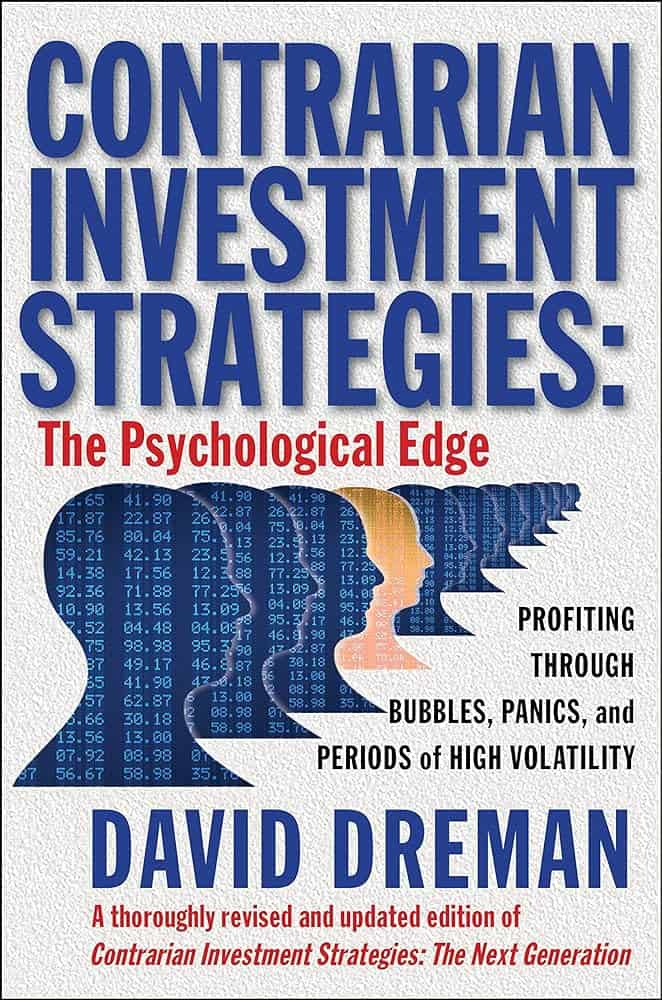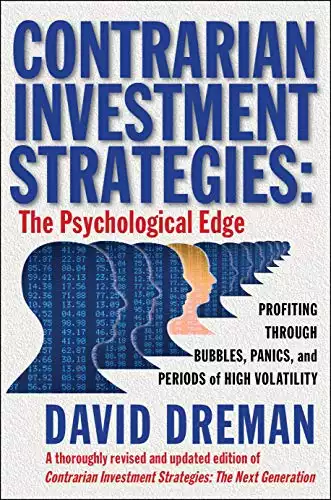Overview : Contrarian Investment Strategies
-
Book Title: Contrarian Investment Strategies
-
Author: Benjamin Graham
-
Publication Date: April 1949
-
Rating: 4.5
-
price: $17.98
-
Pages: 420
About the Author
David Dreman, a renowned investor and financial analyst, is known for his pioneering work in behavioral finance and contrarian investment techniques. His book provides a comprehensive guide to outperforming the market by capitalizing on investor psychology and undervalued stocks.
Contrarian Investment Strategies Book Introduction
In the ever-evolving world of finance and investing, few books have made as significant an impact as David Dreman's "Contrarian Investment Strategies: The Psychological Edge." This comprehensive review delves into the core principles of Dreman's contrarian approach, exploring how it challenges conventional market wisdom and offers a fresh perspective on investment strategies.
Contrarian Investment Strategies Book Summary
David Dreman, a renowned figure in the investment community, presents a compelling case for contrarian investing in this seminal work. The book's central thesis argues that psychological factors drive stock market behavior as much as financial fundamentals do. Dreman posits that market inefficiencies, created by herd mentality and cognitive biases, present unique opportunities for investors willing to go against the grain.
Key Themes:
- Psychological biases in financial decision-making
- Market inefficiencies and their exploitation
- Empirical evidence supporting contrarian strategies
- Practical implementation of contrarian investing
- Long-term perspective and disciplined approach
Analysis of Themes
Dreman's exploration of behavioral finance is particularly insightful. He meticulously examines cognitive biases such as overconfidence, anchoring, and herd behavior, demonstrating how these mental pitfalls can lead to poor investment decisions. This psychological edge forms the cornerstone of his contrarian approach. The author's use of empirical data to support his strategies is one of the book's strongest assets. By analyzing historical market trends, Dreman effectively debunks the myth of market efficiency, presenting a convincing argument for the value of contrarian thinking in personal finance and investing.
"The stock market is driven by psychological factors as much as by financial fundamentals." - David Dreman
Dreman's practical guidance on implementing contrarian strategies is invaluable. He outlines specific criteria for selecting stocks, emphasizing fundamentals such as low price-to-earnings ratios, high dividend yields, and strong balance sheets. This approach aligns well with current market trends, where value investing has seen a resurgence amidst economic uncertainties.
Writing Style
Dreman's writing is both engaging and accessible, striking a balance between academic rigor and practical application. He skillfully uses anecdotes and historical references to illustrate complex financial concepts, making the book appealing to both novice investors and seasoned professionals.
Contrarian Investment Strategies Book Strengths and Weaknesses
Strengths:
- Robust empirical evidence supporting contrarian strategies
- In-depth analysis of psychological factors in investing
- Practical, actionable advice for implementing strategies
- Clear, engaging writing style
Weaknesses:
- Heavy reliance on historical data may not account for future market changes
- Focus on value investing may not appeal to growth-oriented investors
- Limited discussion of modern financial instruments like cryptocurrencies
Contrarian Investment Strategies Book Alternatives
When compared to other influential investing books like Benjamin Graham's "The Intelligent Investor" or Peter Lynch's "One Up On Wall Street," Dreman's work stands out for its strong emphasis on psychological factors. While Graham focuses more on fundamental analysis and Lynch on growth opportunities, Dreman uniquely combines psychological insights with value investing principles.
Highlights from Contrarian Investment Strategies
Contrarian Approach: Successful investing often requires going against the crowd and capitalizing on market pessimism.
Value Over Popularity: Focus on undervalued stocks that are overlooked or disliked by the majority.
Market Inefficiencies: Exploit emotional reactions and herd behavior that lead to mispriced assets.
Patience and Discipline: Contrarian strategies demand a long-term perspective and resilience during market downturns.
Risk Management: Avoid speculative bubbles and excessive risk by sticking to fundamental value principles.
Economic Cycles: Recognize that markets are cyclical and prepare for eventual recoveries in undervalued sectors.
Historical Performance: Empirical data supports contrarian strategies outperforming over the long term.
Conclusion
"Contrarian Investment Strategies: The Psychological Edge" is an essential read for anyone serious about understanding market dynamics and improving their investment outcomes. Dreman's contrarian perspective offers a refreshing alternative to conventional investing wisdom, providing readers with tools to navigate the complex interplay of psychology and finance in the stock market. In today's rapidly changing financial landscape, where new asset classes like cryptocurrencies are emerging and traditional banking models are being challenged, Dreman's principles of disciplined, long-term investing remain highly relevant. His emphasis on understanding market psychology can be particularly valuable in volatile markets driven by social media trends and short-term speculation. For those looking to gain a psychological edge in their investment strategies, this book is an invaluable resource. It not only teaches how to identify market inefficiencies but also instills the mental discipline required for successful long-term investing.
Rating: 4.5/5
Ready to revolutionize your investment approach? Grab your copy of "Contrarian Investment Strategies: The Psychological Edge" by David Dreman today and start your journey towards more informed, psychologically-savvy investing. In conclusion, this article has provided an overview of the topic at hand.





